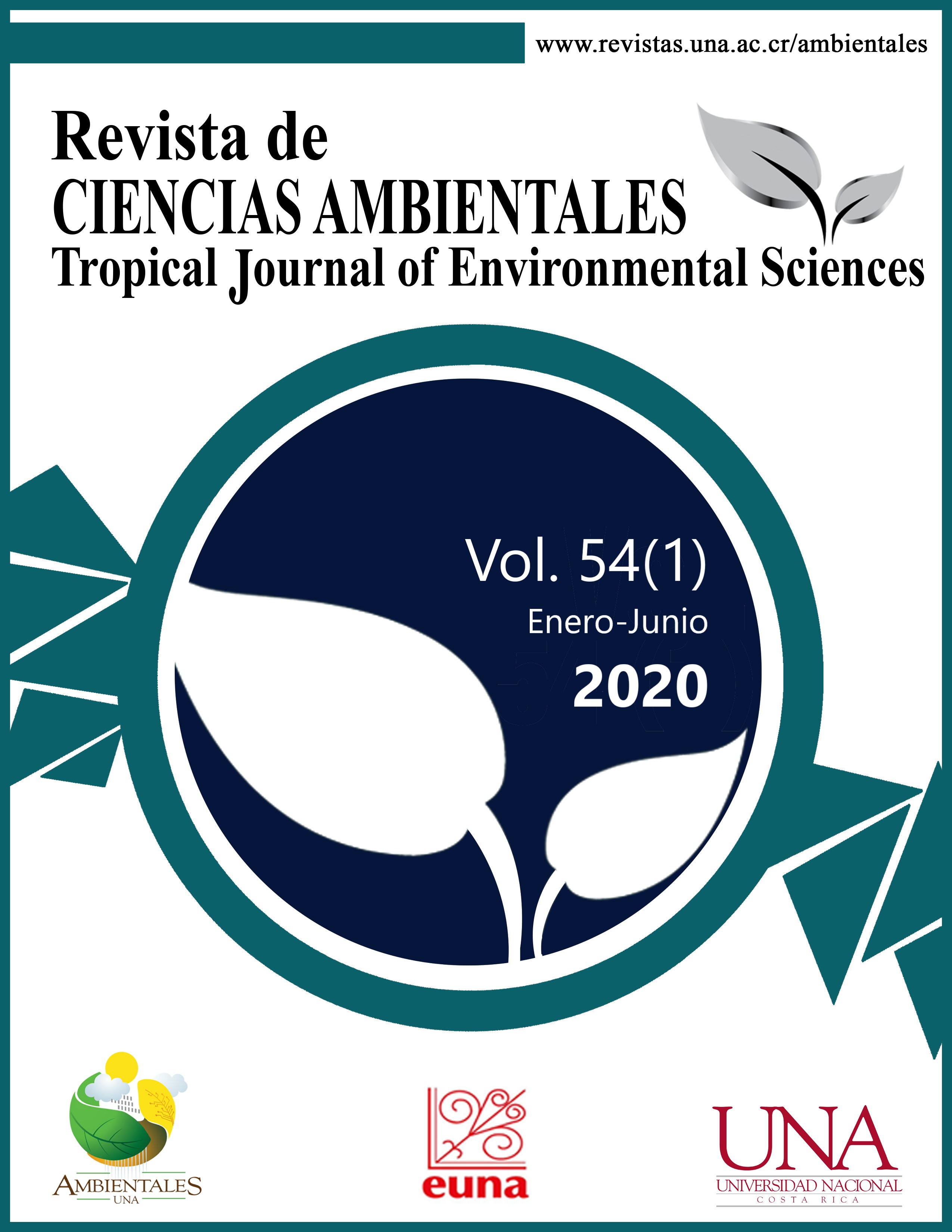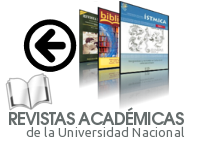Effect of Fitohormones and Fertilizers on the Rooting and Growth of Mini-cuttings of Coffee (Coffea arabica) F1 hybrids
DOI:
https://doi.org/10.15359/rca.54-1.4Keywords:
Biostimulants; clonal gardens; IBA; rooting promoters; vegetative propagationAbstract
[Introduction]: CATIE is seeking to optimize the horticultural technique of rooting coffee mini-cuttings for commercial multiplication of hybrids on a massive scale and at low cost. [Objective]: The objective of the study was to determine the effect of different fertilizers and hormonal stimulants on the rooting ability of cuttings and subsequent growth of the resulting plants. [Methodology]: Mini-cuttings of three coffee hybrids were used, treated with different combinations of a biostimulant, a rooting powder, a formula based on multiminerals, vitamins and phytohormones, and three fertilizers (NP, ZnP, hydroponic solution), and set to root in plastic tunnels with irrigation. Rooted plants were transplanted into bags for a 3-month nursery growth period. [Results]: The rooting phase concluded at 12 weeks, with a mean rooting percentage greater than 89 %, without differences between treatments or between hybrids. Significant differences were found between treatments for root length, with superiority of the combination of the rooting powder with the ZnP fertilizer. In the nursery phase, significant differences were found between treatments for plant height, fresh weight of aerial part, and fresh and dry root weight, highlighting in all cases the combinations of the rooting with the multimineral complex or with the ZnP fertilizer. The L12A28 hybrid stood out in almost all the variables evaluated. [Conclusions]: The study showed the importance of using auxinic and nutritional supplements during the rooting phase to optimize the performance of the plants in the nursery. Likewise, it showed the feasibility of the technique of rooting cuttings as a simple and efficient method for the multiplication of the hybrids.
References
Adama. (2018). Ficha técnica nutrición vegetal NutriZinc Plus. Recuperado de https://www.adama.com/documents/369693/370573/FT+Nutri+Zinc_tcm58-31257.pdf
Agrotico. (2019). Bayfolan forte, ficha técnica. Recuperado de http://agrotico.net/Nutricion_Info/Bayfolan%20Forte/Etiqueta/Bayfolan%20Forte.pdf
Atlántica Agrícola. (2018). Razormin, ficha técnica. Recuperado de https://www.atlanticaagricola.com/tienda/razormin/
Bertrand, B., Alpízar, E., Lara, L., SantaCreo, R., Hidalgo, M., Quijano, J. M., Montagnon, C., Georget, F. & Etienne, H. (setiembre, 2011). Performance of Coffea arabica F1 hybrids in agroforestry and full-sun cropping systems in comparison with American pure line cultivars [Comportamiento de híbridos F1 de Coffea arabica en sistemas agroforestales y de cultivo a pleno sol en comparación con los cultivares americanos de línea pura]. Euphytica, 181, 147–158 https://doi.org/10.1007/s10681-011-0372-7
Blazich, F. A. (1988a). Chemicals and formulations used to promote adventitious rooting [Productos químicos y formulaciones utilizadas para promover formación de raíces adventicias] En T. D. Davis, B. E. Haissig and N. Sankhla (Eds.), Adventitious Root Formation in Cuttings (pp. 132-149). Portland, USA: Dioscorides Press.
Blazich, F. A. (1988b). Mineral nutrition and adventitious rooting [Nutrición mineral y formación de raíces adventicias] En T. D. Davis, B. E. Haissig and N. Sankhla (Eds.), Adventitious Root Formation in Cuttings (pp. 61-69). Portland, USA: Dioscorides Press.
Bolaños, R., Watson, V., & Tosi, J. (2005). Mapa ecológico de Costa Rica (Zonas de Vida), según el sistema de clasificación de zonas de vida del mundo de L.R. Holdridge, Escala 1:750 000. San José, Costa Rica, Centro Científico Tropical.
Centro Agronómico Tropical de Investigación y Enseñanza [CATIE]. (2017). Datos meteorológicos. Turrialba, Costa Rica. Recuperado de https://www.catie.ac.cr/productos-y-servicios/estacion-meteorologica/estacion-meteorologica-catie.html
Davis, T. D. (1988). Photosynthesis during adventitious rooting [Fotosíntesis durante la formación de raíces adventicias] En T. D. Davis, B. E. Haissig and N. Sankhla (Eds.), Adventitious Root Formation in Cuttings (pp. 79-87). Portland, USA: Dioscorides Press.
De Melo V. F. E., & Astorga, D. C. (2015). Prevención y control de la roya del café. Manual de buenas prácticas para técnicos y facilitadores. CATIE, Serie técnica, Manual técnico n.o 131.
Etienne-Barry, D., Bertrand, B., Vásquez, N. & Etienne, H. (diciembre, 1999). Direct sowing of Coffea arabica somatic embryos mass-produced in a bioreactor and regeneration of plants [Siembra directa de embriones somáticos de Coffea arabica producidos en masa en un biorreactor y regeneración de plantas] Plant Cell Reports 19, 111–117. https://doi.org/10.1007/s002990050720
Gaspar, T. & Hofinger, M. (1988). Auxin metabolism during adventitious rooting [Metabolismo de las auxinas durante la formación de raíces adventicias] En T. D. Davis, B. E. Haissig and N. Sankhla (Eds.), Adventitious Root Formation in Cuttings (pp. 117-131). Portland, USA: Dioscorides Press.
Georget, F., Courtel, P., Malo, E., García, E., Hidalgo, M., Alpízar, E., Breitler, J. C., Bertrand, B., & Etienne, H. (febrero, 2017). Somatic embryogenesis-derived coffee plantlets can be efficiently propagated by horticultural rooted mini-cuttings: A boost for somatic embryogenesis [Plántulas de café derivadas de embriogénesis somática pueden ser propagadas eficientemente mediante mini-estaquillas hortícolas enraizadas: Un impulso para la embriogénesis somática] Scientia Horticulturae, 216, 177–185. https://doi.org/10.1016/j.scienta.2016.12.017
Grange, R. I., & Loach, K. (1983). The water economy of unrooted leafy cuttings [La economía hídrica de estaquillas con hoja no enraizadas]. Journal of Horticultural Science, 58(1), 9-17. https://doi.org/10.1080/00221589.1983.11515084
Hartmann, H. T. & Kester, D. E. (1983). Plant propagation –Principles and practices [Propagación de plantas – principios y prácticas] (2nd. ed.). Englewood Cliffs, N. J.
ICAFE (Instituto del Café de Costa Rica). (2011). Guía técnica para el cultivo del café (1era ed.). Heredia, Costa Rica: ICAFE-CICAFE.
ICAFE. (2019). Entrevista especial. Directora de ICAFE: “Los productores de café están en crisis”. Recuperado de https://www.larepublica.net/noticia/directora-de-icafe-los-productores-de-cafe-estan-en-crisis
INAGROSA (Industrias Agrobiológicas, S. A.). (2018). Fosnutren. Recuperado de http://www.inagrosa.es/productos/fosnutren-20/
Leakey, R. R. B. (2014). Plant cloning: Macropropagation [Clonación de plantas: Macropropagación] Encyclopedia of Agriculture and Food Systems, 4, 349-359. https://doi.org/10.1016/B978-0-444-52512-3.00223-0
Leakey, R. R. B., Mesén, F., Tchoundjeu, Z., Longman, K. A., Dick, J. Mc.P., Newton, A. C., Matin, C., Grace, J., Munro, R. C., & Muthoka, P. N. (1990). Low-technology techniques for the vegetative propagation of tropical trees [Métodos de baja tecnología para la propagación vegetativa de árboles tropicales] Commonwealth Forestry Review, 69, 247-257.
Loach, K. (1988). Water relations and adventitious rooting [Relaciones hídricas y formación de raíces adventicias] En T. D. Davis, B. E. Haissig and N. Sankhla (Eds.), Adventitious Root Formation in Cuttings (pp. 102-116). Portland, USA: Dioscorides Press.
Mesén, F. (1998). Enraizamiento de estacas juveniles de especies forestales: Uso de propagadores de sub-irrigación. CATIE, Serie Técnica, Manual Técnico n.o 30.
Mesén, F. & Jiménez, L. D. (2016). Producción de clones de café por miniestaquillas. Turrialba, Costa Rica, CATIE. Serie Técnica, Manual Técnico n.o 130.
Mesén, F., Newton, A. C., & Leakey, R. R. B. (1997). Vegetative propagation of Cordia alliodora (Ruiz & Pavon) Oken: The effect of IBA concentration, propagation medium and cutting origin [Propagación vegetativa de Cordia alliodora (Ruiz & Pavon) Oken: Efecto de la concentración de AIB, sustrato de propagación y origen de la estaquilla]. Forest Ecology and Management, 92, 45-54. https://doi.org/10.1016/S0378-1127(96)03960-6
Mesén, F., Newton, A. C., & Leakey, R. R. B. (2001). The influence of stockplant environment on morphology, physiology and rooting of leafy stem cuttings of Albizia guachapele [Influencia del ambiente de las plantas donantes sobre la morfología, fisiología y enraizamiento de estaquillas con hoja de Albizia guachapele]. New Forest 22, 213-227. https://doi.org/10.1023/A:1015668011884
Murillo, O., Rojas, J. L., & Badilla, Y. (2001). Reforestación clonal. Instituto Tecnológico de Costa Rica. Cartago, Costa Rica.
Newton, A. C., Dick, J. Mc.P., Mc Beath, C. & Leakey, R. R. B. (2008). The influence of R:FR ratio on the growth, photosynthesis and rooting ability of Terminalia spinosa Engl. and Triplochiton scleroxylon K. Schum [Influencia de la relación R:FR en el crecimiento, fotosíntesis y la capacidad de enraizamiento de Terminalia spinosa Engl. y Triplochiton scleroxylon K. Schum]. Annals of Applied Biology, 128(3), 541–556. https://doi.org/10.1111/j.1744-7348.1996.tb07113.x
Presidencia de la República de Costa Rica. (2019). Costa Rica proyecta producir 2.5 millones de fanegas de café en un plazo de 3 años. Recuperado de https://presidencia.go.cr/comunicados/2019/05/costa-rica-proyecta-producir-2-5-millones-de-fanegas-de-cafe-en-un-plazo-de-3-anos/
Programa Cooperativo Regional para el Desarrollo Tecnológico y Modernización de la Caficultura [PROMECAFE]. (2005). Mejoramiento genético del café en América Central: Selección de clones de híbridos F1 de Coffea arabica (Informe final ATN-SF-7382-RG IICA-BID). Turrialba, Costa Rica, CATIE.
Programa Cooperativo Regional para el Desarrollo Tecnológico y Modernización de la Caficultura [PROMECAFE]. (2011). Mejoramiento genético del café en América Central, selección de clones de Híbridos F1 de Coffea arabica y desarrollo tecnológico. Recuperado de http://www.promecafe.org
Quijano, J. M. (2007). Validación de nuevos híbridos F1 de Coffea arabica introducidos de PROMECAFE/CATIE a PROCAFE (Informe PROCAFE). El Salvador.
QUIMIA (Química Internacional Aplicada, México). (2018). Ficha técnica Hormovit enraizador. Recuperado de http://dunemexicali.com.mx/archivos/AGROQUIMICOS/ESTIMULANTES/CONVENCIONALES/QUIMIA/HORMOVIT%20ENRAIZADOR/HORMOVIT%20ENRAIZADOR%20HT.pdf
Ruiz-Solsol, H., & Mesén, F. (abril, 2010). Efecto del ácido indolbutírico y tipo de estaquilla en el enraizamiento de sacha inchi (Plukenetia volubilis L.). Agromomía. Costarricense, 34(2), 259-267.
Downloads
Published
How to Cite
Issue
Section
License

This work is licensed under a Creative Commons Attribution-NonCommercial-ShareAlike 4.0 International License.



















